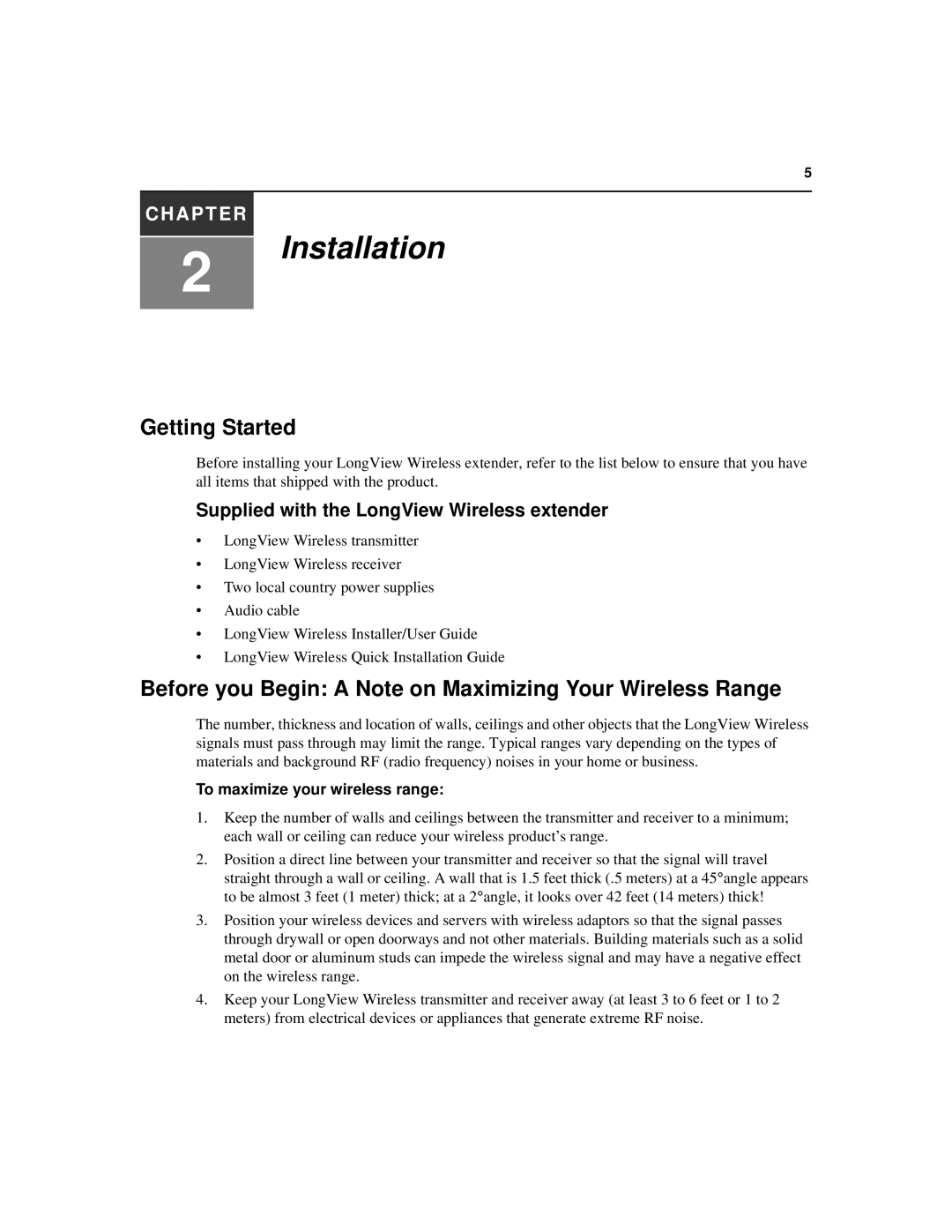
5
CHAPTER
2
Installation
Getting Started
Before installing your LongView Wireless extender, refer to the list below to ensure that you have all items that shipped with the product.
Supplied with the LongView Wireless extender
•LongView Wireless transmitter
•LongView Wireless receiver
•Two local country power supplies
•Audio cable
•LongView Wireless Installer/User Guide
•LongView Wireless Quick Installation Guide
Before you Begin: A Note on Maximizing Your Wireless Range
The number, thickness and location of walls, ceilings and other objects that the LongView Wireless signals must pass through may limit the range. Typical ranges vary depending on the types of materials and background RF (radio frequency) noises in your home or business.
To maximize your wireless range:
1.Keep the number of walls and ceilings between the transmitter and receiver to a minimum; each wall or ceiling can reduce your wireless product’s range.
2.Position a direct line between your transmitter and receiver so that the signal will travel straight through a wall or ceiling. A wall that is 1.5 feet thick (.5 meters) at a 45°angle appears to be almost 3 feet (1 meter) thick; at a 2°angle, it looks over 42 feet (14 meters) thick!
3.Position your wireless devices and servers with wireless adaptors so that the signal passes through drywall or open doorways and not other materials. Building materials such as a solid metal door or aluminum studs can impede the wireless signal and may have a negative effect on the wireless range.
4.Keep your LongView Wireless transmitter and receiver away (at least 3 to 6 feet or 1 to 2 meters) from electrical devices or appliances that generate extreme RF noise.
